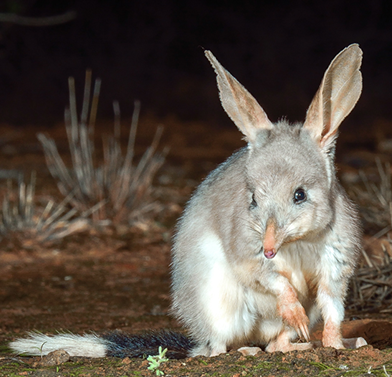Thursday 24th June, 6.30pm for 7.00pm in Brookfield Hall
ERADICATING FERAL CATS – A CASE STUDY
Australia’s extinction rate for mammals, is the highest in the world. The two major factors creating this extinction crisis are predation by foxes and feral cats, and habitat loss. Feral cats now occupy 99% of Australia.
Save the Bilby Fund (STBF) established a 25 sq km fenced predator exclusion enclosure in Currawinya National Park in 2003 and introduced bilbies there in 2005.
Researchers detected feral cats inside the fence in 2012 and by 2014 the breeding population of bilbies was wiped out.
STBF took over the formal management of the Currawinya bilby enclosure from National Parks in 2016 and commenced an intensive program that removed the feral cats, oversaw the upgrade of the perimeter fence and reintroduced bilbies there. The removal of cats took over 4 years of intense effort and involved several methods, some much more successful than others.
This presentation will outline the process we undertook to eradicate feral cats, leading up to the successful re-introduction of bilbies into the enclosure in April 2019. Through this process Paul has gained an appreciation of why conservation groups underestimate the resilience of feral cats and the difficulty in eradicating them.

Bilby Photo Wayne Lawler
Presenter
Dr Paul Campbell is a Director of Save the Bilby Fund. He has a PhD from the University of Queensland for his ecological modelling of the fauna and flora of Fraser Island.
Paul has been a director of Save the Bilby Fund since 2010 and helped implement their ‘Bilby Tracks’ citizen science trips to outback Queensland. He is an experienced guide and outback traveler into some of the most remote parts of Australia.


